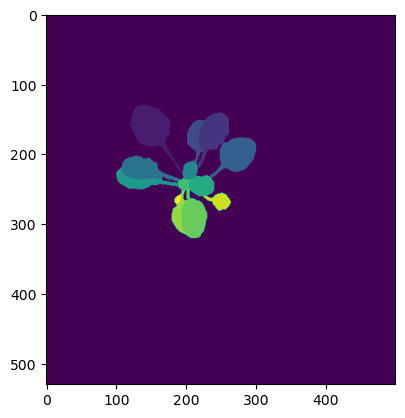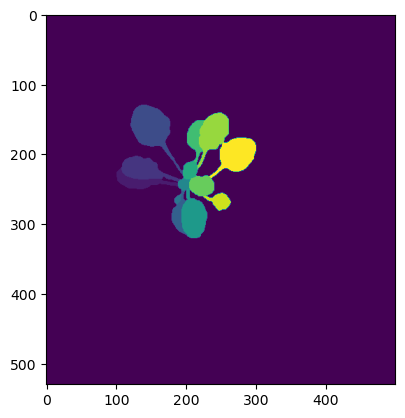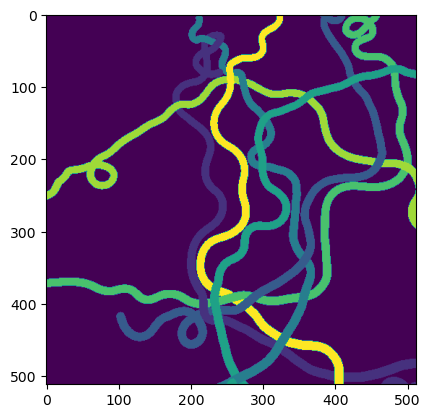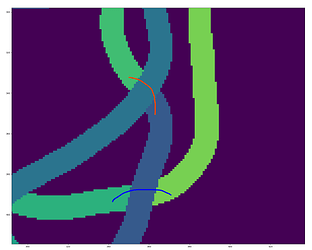Occluded segments of the same instance assigned different IDs after Mutex Watershed
I am doing the instance segmentation of cables by predicting affinities then post-processing the result using mutex watershed.
However, I couldn’t figure out how to use the mutex watershed algorithm to model model occlusion.
A short explanatory example can be found at Mutex-Watershed-Instance-segmentation.
Use two types of neighborhoods / offsets:
- Offset 1
offsets = [
[0, -1, 0], [0, 0, -1],
[0, -1, -1], [0, 1, 1], [0, -1, 1], [0, 1, -1],
[0, -9, 0], [0, 0, -9],
[0, -9, -9], [0, 9, -9], [0, -9, -4],
[0, -4, -9], [0, 4, -9], [0, 9, -4],
[0, -27, 0], [0, 0, -27], [0, -27, 27]
]
- 4 neighborhoods at distance of {1, 2, 4, 8, 32, 64} (Similar to Affinity Derivation and Graph Merge for Instance Segmentation).
i.e.,
1. On CVPPP Plant dataset
Input Image:

Output After Affinity and Mutex Watershed:

Note that the mutex watershed perfectly reconstructs the ground truth.
2. On Cable dataset
Input Image:

Output After Affinity and Mutex Watershed:

Disjoint parts of the same cable are not connected after mutex watershed even though the area of the kernel / neighborhood (64) is larger than the width of a cable (10-15px)
Zoomed-in view of the disconnected segments
Why does this happen, and how to correct it?
Thanks.

